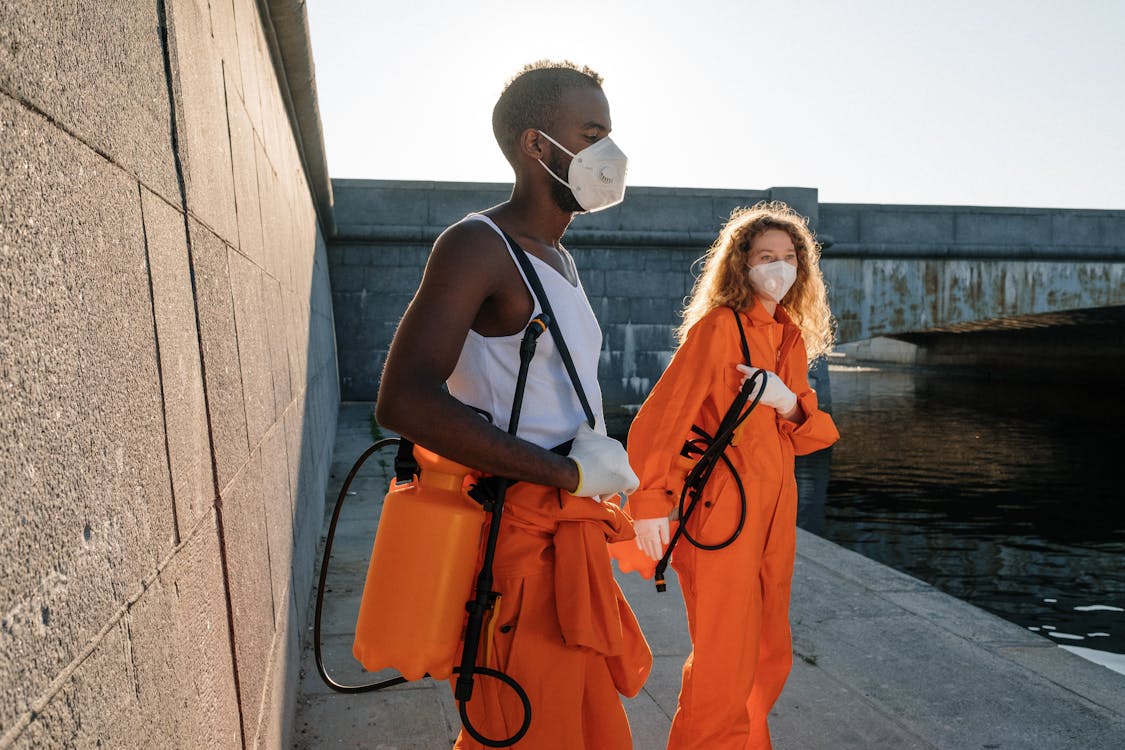Water damage in commercial buildings can have serious repercussions, especially when it involves contaminated water. This type of water damage poses unique challenges, including health risks, structural damage, and business disruptions.
In this blog, we will explore the critical aspects of addressing contaminated water damage in commercial properties, emphasizing the importance of prompt and thorough remediation.
Understanding Contaminated Water Damage
Contaminated water damage refers to water damage caused by water that contains harmful microorganisms, chemicals, or other hazardous substances. It is typically classified into three categories:
- Category 1 (Clean Water): Water from a clean source, such as a broken pipe or leaking faucet. While not immediately hazardous, it can become contaminated if not addressed quickly.
- Category 2 (Gray Water): Water that contains significant contamination and could cause discomfort or illness. Examples include water from washing machines, dishwashers, and sump pump failures.
- Category 3 (Black Water): Water that is extremely contaminated and poses severe health risks. Sources include sewage backups, floodwaters, and water from rivers or streams. This water can contain harmful bacteria, viruses, and chemicals.
In commercial buildings, contaminated water damage often involves Category 2 or Category 3 water, making professional remediation essential to ensure the safety and health of occupants.
Health Risks Associated with Contaminated Water Damage
The presence of contaminated water in a commercial building can lead to several health risks, including:
- Infections: Exposure to contaminated water can result in infections caused by bacteria, viruses, and parasites.
- Allergic Reactions: Mold and other contaminants can trigger allergic reactions, including sneezing, coughing, and skin rashes.
- Respiratory Problems: Inhaling contaminated air can lead to respiratory issues, such as asthma attacks and bronchitis.
- Toxic Exposure: Chemicals and hazardous substances in the water can cause a range of health problems, including headaches, dizziness, and long-term illnesses.
Given these risks, contacting water damage restoration experts promptly and effectively is crucial to protect the health of building occupants and prevent further damage.
Steps to Address Contaminated Water Damage in Commercial Buildings
- Immediate Response and Assessment
- Contact a Professional Water Damage Repair Company: It’s essential to reach out to water damage repair experts who specialize in contaminated water damage restoration. Companies like Pro Water Damage Inc. offer comprehensive services to handle such situations safely and effectively.
- Initial Assessment: Water damage repair professionals will assess the extent of the water damage, identify the source of contamination, and develop a remediation plan.
- Safety Precautions
- Evacuate the Area: Ensure that all occupants leave the affected area to avoid exposure to harmful contaminants.
- Protective Gear: Restoration professionals will wear appropriate protective gear, including gloves, masks, and eye protection, to safeguard themselves during the cleanup process.
- Water Removal and Containment
- Water Extraction: Using industrial-grade pumps and vacuums, professionals will remove standing water from the property.
- Containment: Contaminated areas are isolated to prevent the spread of contaminants to unaffected parts of the building. This may involve sealing off affected areas with plastic sheeting and creating negative air pressure using air filtration devices.
- Cleaning and Disinfection
- Thorough Cleaning: All affected surfaces and materials are cleaned using specialized cleaning agents designed to remove contaminants.
- Disinfection: Antimicrobial treatments are applied to disinfect the area and prevent the growth of harmful microorganisms.
- Structural and Surface Drying
- Drying and Dehumidification: Powerful air movers and dehumidifiers are employed to dry the structure and surfaces. This is essential to stop mold development and avoid additional contamination.
- Monitoring Moisture Levels: Moisture meters and thermal imaging cameras are used to ensure that all areas are thoroughly dried.
- Repair and Restoration
- Replacing Damaged Materials: Materials that cannot be adequately cleaned and disinfected, such as drywall, insulation, and carpeting, are removed and replaced.
- Restoration: The final step involves restoring the property to its pre-damage condition, which may include repairs and reconstruction.

Prevention Tips for Commercial Buildings
Preventing contaminated water damage in commercial buildings involves regular maintenance and proactive measures:
- Regular Inspections: Conduct routine inspections of plumbing systems, roofing, and drainage systems to identify and address potential issues before they lead to water damage.
- Maintenance of HVAC Systems: Ensure that heating, ventilation, and air conditioning systems are properly maintained to prevent leaks and moisture buildup.
- Emergency Preparedness: Develop an emergency response plan that includes procedures for dealing with water damage, including contact information for a reliable water damage restoration company.
- Proper Waste Disposal: Ensure that all waste is disposed of properly to prevent contamination of water sources.
- Employee Training: Educate employees about the importance of reporting leaks and other issues promptly to prevent water damage.
For commercial property owners in Orange County, it’s vital to have a reliable partner for water damage restoration. Local Pro Water Damage Inc. offers specialized services to handle contaminated water damage effectively, ensuring the safety and integrity of your property.

For expert assistance with contaminated water damage in Orange County, contact Local Pro Water Damage Inc. today. Ensure your commercial property is properly restored and safe for all occupants.




